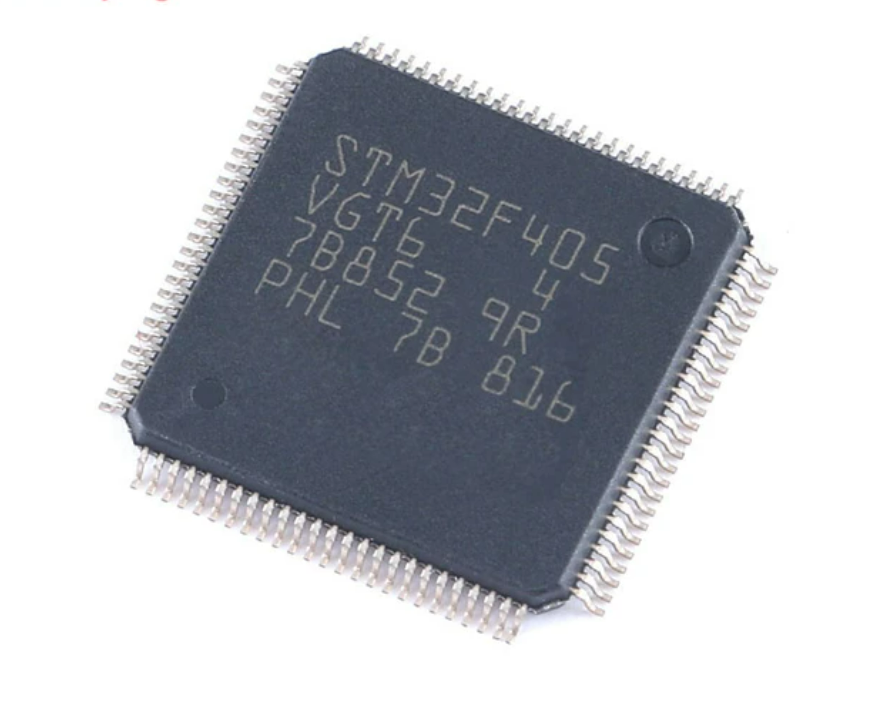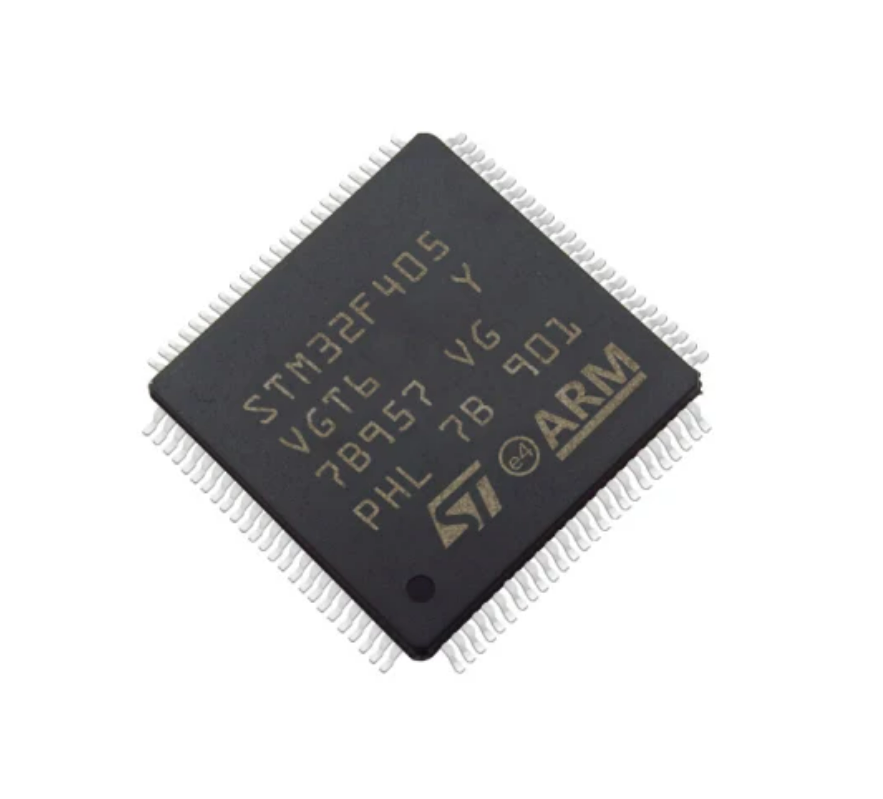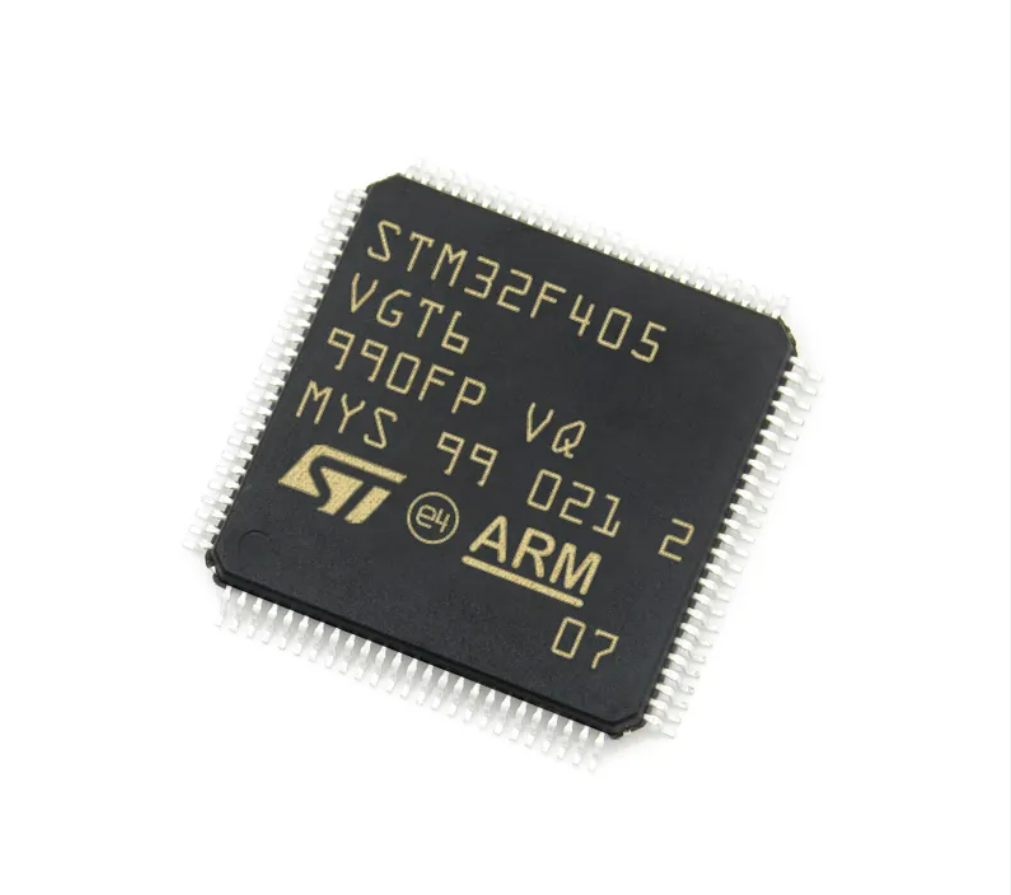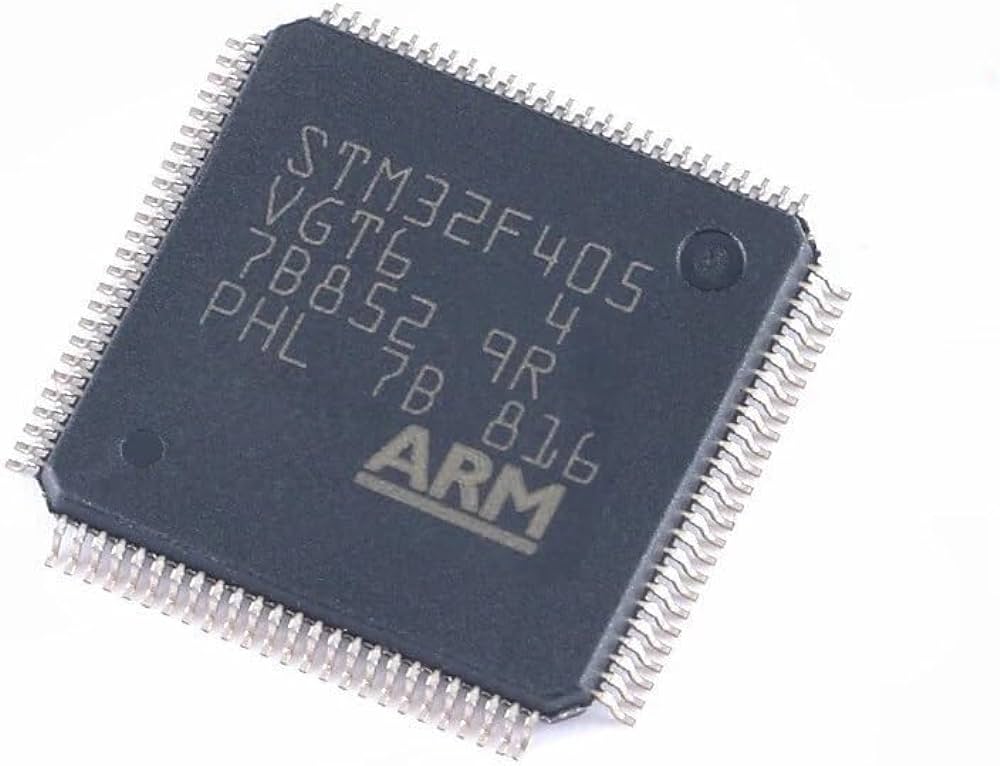Break Secured STM32F405VG microcontroller memory
Break Secured STM32F405VG microcontroller memory to extract embedded binary program of flash memory and heximal data of eeprom memory from original microchip MCU STM32F405VG; firmware of encrypted microprocessor STM32F405VG will be recovered after disable its security fuse bit;

The development process of the STM32F405VG microcontroller likely involved several stages and teams within STMicroelectronics. Here’s a generalized overview of how microcontrollers like the STM32F405VG are typically developed:
Market Analysis and Requirements Gathering: The development process often begins with market analysis and gathering requirements from customers, industry trends, and technological advancements. This helps in understanding the needs and expectations for the new microcontroller.

Architecture Design: Engineers design the architecture of the microcontroller, including the selection of the core processor (in this case, the ARM Cortex-M4), memory organization, peripheral interfaces, and other key features based on the gathered requirements.
RTL Design and Verification: The Register Transfer Level (RTL) design phase involves creating the digital logic description of the microcontroller using hardware description languages (such as Verilog or VHDL). This design is then verified through simulations to ensure correctness and functionality.
Physical Design and Layout: Once the RTL design is verified, the physical design and layout of the microcontroller chip are created. This involves designing the layout of transistors, interconnections, and other components on the silicon die while considering factors like power consumption, signal integrity, and manufacturability.

Manufacturing Process: The finalized design is sent for semiconductor manufacturing, where the microcontroller chips are fabricated using advanced semiconductor manufacturing processes such as CMOS (Complementary Metal-Oxide-Semiconductor) technology which will bring convenient to crack arm secured microcontroller flash memory. This involves multiple steps including wafer fabrication, lithography, etching, doping, and packaging.
Software Development: Concurrently with hardware development, software development tools, firmware libraries, and development environments are created to support software development for the microcontroller. This includes development tools such as IDEs (Integrated Development Environments), compilers, debuggers, and software libraries.

Testing and Validation: After manufacturing, the microcontroller chips undergo extensive testing and validation to ensure they meet specifications, performance requirements, and quality standards. This includes functional testing, reliability testing, and characterization across different operating conditions.
Documentation and Support: Documentation including datasheets, reference manuals, application notes, and software examples are created to assist developers in using the microcontroller effectively. Technical support and training may also be provided to customers.
Throughout the development process, collaboration among various teams including design engineers, verification engineers, manufacturing engineers, software developers, and product managers is crucial to ensure the successful development and launch of the STM32F405VG microcontroller. Additionally, adherence to industry standards, compliance with regulations, and customer feedback play significant roles in shaping the development process.

